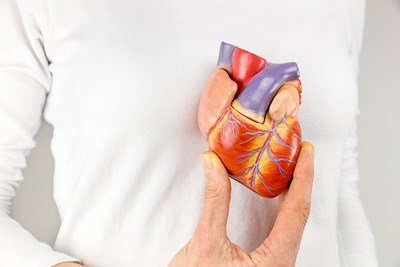Coronary artery disease (CAD), or atherosclerotic heart disease, is a condition that stems from the development of atherosclerosis in the coronary arteries.
Atherosclerosis is the result of years of plaque building up in the arteries, slowly making it more and more difficult for blood to pass through, bringing fresh supplies of oxygen to the heart. The plaque itself is a waxy substance, made up of cholesterol, fat, and other cellular bits and debris in the arteries. Although there are many medications and treatments available for CAD, to be successful in the long term, a change in lifestyle is necessary.
Lifestyle Choices
One of the most important changes that needs to be made to successfully manage and halt CAD is cigarettes smoking. The chemicals in cigarettes are extremely detrimental to the cardiac system altogether. Additionally, a sedentary lifestyle and/or poor diet habits can be problematic. It’s important to institute a doctor-approved exercise regimen (it can be dangerous to work too hard too quickly with CAD) and to begin a heart-healthy diet. Whole grains, lean meats, and a variety of fruits and vegetables are not only good for the heart, but the whole body. Controlling stress can also be a key point in managing your CAD.
Medications
There are a variety of medications available for CAD. Your doctor or cardiologist will help decide which is best for you, considering your circumstances, severity, and risk factors. According to the Mayo Clinic, the most common types of medication include:
Cholesterol medication: Getting rid of excessive cholesterol, particularly the unhealthy low density lipoprotein, or “LDL” cholesterol, helps deprive plaque of one of its main ingredients
Blood thinners: Something as simple as aspirin may be sufficient for some patients. Others may require something designed specifically to make your blood clot less easily. This is especially important because the plaque deposits can rupture or burst, and the body tries to repair these by making a clot that can block off the artery all together, causing a heart attack.
Beta blockers: These are intended for high blood pressure; by “blocking” adrenaline, they can help the heart to beat more calmly, which lowers blood pressure and thus the amount of oxygen the heart needs.
Nitroglycerin: This dilates the coronary arteries, which means the heart requires less blood and oxygen.
Angiotensin-converting enzyme (ACE) inhibitors/angiotensin II receptor blockers (ARBs): These medications ease the arteries, so the heart doesn’t need to pump as hard. They block certain enzymes and hormones that can raise blood pressure.
Treatments
When medication and a change in lifestyle aren’t enough, it may be necessary to perform more serious options. Angioplasty, stenting, and cardiac catheterization are an interwoven series of events. A catheter is sent through a blocked artery to the heart. A tiny balloon is inserted and inflated, dilating the artery to improve blood flow. A stent, or metal mesh tube, is then put in to ensure the artery stays that way. When more than one artery is blocked or the alternatives have failed, coronary bypass surgery may be necessary. Arteries are taken from elsewhere on the body and grafted into place around blocked arteries. This allows blood to reach the heart through a circumvented method, avoiding the blocked arteries all together.




